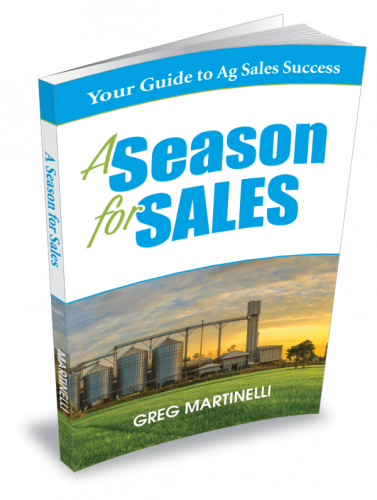10 Takeaways from the J.L. Farmakis Inc.
2022 Farmer Speaks Survey
I am always looking for ways to understand customer decision-making processes. This information is critical when selling to someone. You must know what factors are influencing their decisions. Knowing them allows a salesperson to sell on purpose versus just out there spreading the good word about their products.
To hammer this point home, I spend time on this in sales training workshops. I will ask, “How do your best customers make decisions? What factors do they consider?” While some groups know the answer fairly well, too often, they struggle to answer these basic questions. Or, they answer with the classic, “whoever is cheapest”.
On a recent webinar, I had the opportunity to listen in as J.L. Farmakis Inc. shared several insights from their 2022 Farmer Speaks Survey. During the webinar, they shared key results from the survey. They also had three larger producers in the upper Midwest participate as well. They helped interpret the results from a producer’s point of view.
For more details and the full report, I encourage you to reach out to your J.L. Farmakis representative or jump on their website to connect with them. Below are those points that I took from it and how they can help you when you are out there selling farm to farm.
10 Key takeaways from the Farmer Speaks Survey
- Trust: The word trust was mentioned multiple times. Producers need to have a level of trust with their Ag retailer for everything to work. How do you build trust? Besides hanging in there for many years, there are ways to speed up trust-building. See: Trust: The ultimate sales tool
- Buying habits – Buying early: The supply shortages have driven producers to buy earlier and earlier. This now has them paying earlier and taking possession earlier. All this means, that your selling timeline is earlier.
- Taking delivery earlier: Previously, a producer could order in the Fall or even in late winter, and wouldn’t take delivery until right when they needed it in the Spring. To reduce the uncertainty of having the products when they need them, the producers are taking delivery as soon as the retailer can get them. In some cases, this included storing liquid over the winter months.
- Other key buying habits: When it came to the question of how producers manage through shortages, they answered:
- 40% bought an alternative product
- 40% went without the products
- 32% bought it from somewhere else
- Two years of loans: the buying habit mentioned in point number two means that producers are ordering and paying for two years’ worth of crop inputs before harvest. In this example, 2022 inputs were ordered and paid for in the Fall of 2021. Those inputs will be paid for from the 2022 crop. However, in order to assure they have supplies on hand, the producer must order and pay for their 2023 crop inputs in the next 90 days.
- Earlier service work on equipment: Clearly, the equipment industry has been affected by shortages. Not just whole goods, but parts and service are in short supply as well. These producers mentioned they are doing service work much earlier on equipment. Previously, they worked on equipment right before they needed it for fieldwork. However, by servicing and preparing earlier, it allows much more time for parts and service work.
- YouTube: One producer mentioned a key point about YouTube. He is on the social media platform all the time. However, he’s on there for a how-to video clip and not for random content. I think this was an important point. Recent numbers I have seen say that 40% of farmers are on YouTube. Just like myself, they go there to learn how to do something, not surf the web.
- New product decisions: This was a very interesting component of the webinar. None of them felt the program incentives on a new product were important until they were sold on it. In fact, program incentives felt gimmicky with new products. One producer mentioned, “Show me the data. Show me multiple year data. Show me the local data with an ROI to tie it back to my farm”.
- Biologicals: several are doing trials and considering biologicals as input prices increase. When NPK prices were low, those products didn’t make as much financial sense to them. However, with today’s prices, biologicals are getting a lot of attention. My take on this is that doing your own crop year field trials is a fairly long-range, slow approach. If the trials were needed for this producer to make a buying decision, he should have been doing this before the recent price increase. He is going to miss at least 1-2 years of potential savings due to needing his own proof on his farm.
- Top 3 challenges: towards the end of the webinar, the producers were asked about their top three challenges. They listed:
- Input Prices
- Interest rates
- Commodity prices
Not surprising that these were listed. The methods to help reduce some of these concerns were:
- More No-till to save on fuel
- More precision to save on input usage
- Considering biologicals
These were just some of the buying habits and decision-making information that jumped out at me as I watched the webinar and read the full survey results. Again, I encourage you to reach out for a copy of the full report if you serve crop producers. While the survey may not be compiled from thousands of producers and no survey is representative of every producer, it does give an Ag salesperson a great place to start discussions with their customers.


